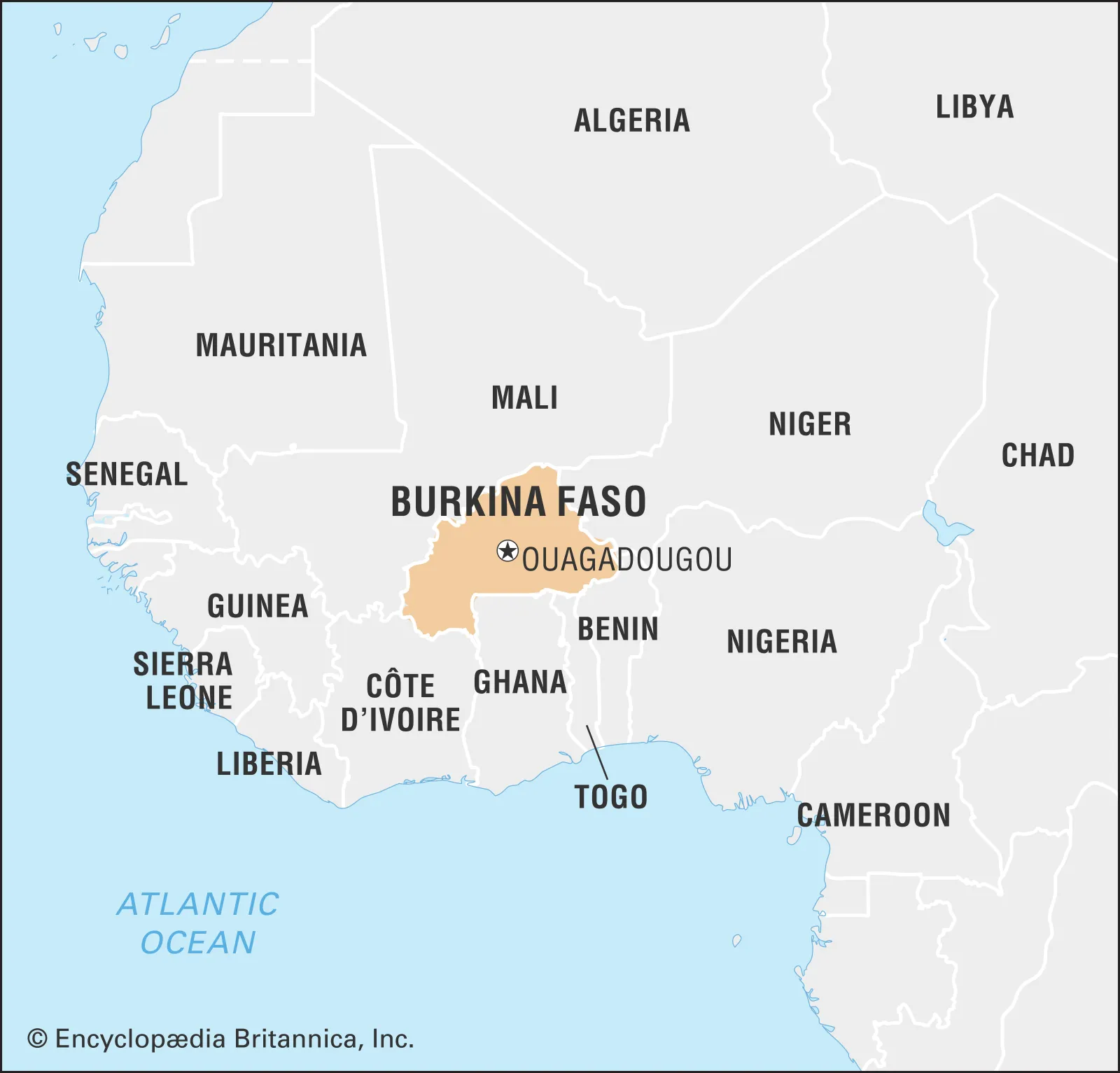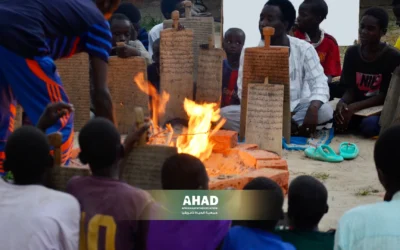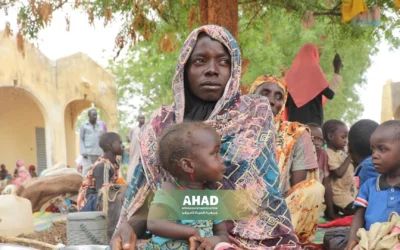Life in Burkina Faso
Burkina Faso, a West African country, is considered one of the poorest countries in the world, but it has a rich culture and an ancient history. This is manifested in the diversity of cultures and Time-Honored Traditions that mix traditional African origins and Islamic influences. Burkina Faso is famous for its distinctive traditional music and dances, and agriculture is the main activity of most of the population.
Life in Burkina Faso is characterized by simplicity and adaptability to harsh environmental conditions, as the population faces significant economic and social challenges. Agriculture, mainly based on food crops such as maize and millet, is a major source of livelihood. Traditional music and arts are also an essential part of people’s lives, as artistic and cultural expression reflect today’s life along with religious traditions.
Environmental challenges are a big problem in Burkina Faso, as the country suffers from desertification and drought, which negatively affects agriculture and Water Resources. In addition, the country faces challenges in education and Health, which affects the quality of life of the population.
Despite these challenges, people in Burkina Faso have a spirit of resilience and solidarity, are generous and hospitable towards visitors and guests. Their life reflects their simplicity and flexibility in dealing with the harsh conditions facing them, and highlights their ability to innovate and effectively exploit available resources.
In the end, Burkina Faso is an example of resilience and will in the face of challenges, and life in it shows continuity and the ability to thrive despite difficulties.
A comprehensive look at life in Burkina Faso
Burkina Faso, a country located in West Africa, has a rich culture and ancient history, and is considered one of the poorest countries in the world. The country was founded as a French colony and gained independence in 1960 under the name “Upper Volta”. Burkina Faso is characterized by its diverse terrain that includes wide plateaus in the center, grassy savanna in the North, and tropical forests in the South.
Economy and infrastructure of Burkina Faso
Economy
The economy of Burkina Faso is mainly based on agriculture, with agriculture accounting for more than 80% of GDP and providing a livelihood for more than 80% of the population. Agricultural activities include the cultivation of crops such as corn, millet and peanuts, as well as cattle breeding. The agricultural sector is exposed to challenges such as desertification and lack of Water Resources, which negatively affects productivity and food security.
The country is considered a gold and phosphate producer, but these sectors are experiencing challenges in investment and development due to political and economic unrest.
Infrastructure
Routes
– Burkina Faso has a road network of about 12,500 kilometers, but only about 2,000 kilometers of it are paved. Paved roads are mainly concentrated in major cities such as the capital Ouagadougou, bobodioulasso and bobodioulasso.
Means of Transportation
– Transportation in Burkina Faso is heavily dependent on road transport, with most of the population relying on private cars or motorcycles to get around. There is an irregular train service operated by citarail on only one line from Kaya to Abidjan in Cote d’ivoire, passing through the main cities.
Air transport
– There is an international airport in the capital Ouagadougou that offers flights to cities in Burkina Faso and some other European and regional capitals.
Challenges
Burkina Faso faces significant challenges in desertification and lack of Water Resources, which negatively affects agriculture and food security.
The government is experiencing a lack of adequate funding to improve transport and road infrastructure, which affects economic growth and quality of life.
Unemployment rates are high among youth and women, which increases poverty levels and hinders economic development.
Despite the great challenges they face, the Burkinabe people remain steadfast and United, expressing their generosity and hospitality towards visitors. Their simplicity and flexibility in dealing with difficult circumstances reflect their ability to innovate and adapt.
With continuous investment in infrastructure and the promotion of economic reforms, Burkina Faso can achieve sustainable progress and improve the quality of life of its population in the future.
Health care in Burkina Faso
The healthcare system in Burkina Faso is facing major challenges due to lack of funding and limited health resources. The health structure consists of sub-and comprehensive health centers, regional, national and international hospitals, and the country is divided into 11 health zones and 53 health zones to provide health services.
Financing and spending
Health care spending in Burkina Faso is very low, at less than 10% of GDP.
– This low percentage of spending negatively affects the ability to provide quality and effective health services.
Health challenges
The population from Burkina Faso suffers from several health problems that include AIDS, malaria, food poisoning and children’s diseases such as acute diarrhea.
Mortality rates among newborns and infants are high due to lack of health care and malnutrition.
Health infrastructure
Sub-and comprehensive health centers are available throughout the country, working to provide basic services to patients.
Regional, national and international hospitals are available in major cities to provide advanced healthcare services and special treatments.
Future fixes and improvements
– The government seeks to improve the health infrastructure and increase health care spending to improve the quality of services and expand access.
– International organizations and NGOs support the country’s efforts in strengthening health capacities and improving standards of care.
Despite the great challenges faced by health care in Burkina Faso, the people remain determined to improve health conditions and provide care to those in need. With continuous investment and international support, it is possible to improve the health infrastructure and provide better health services to the population.

Education in Burkina Faso
The government of Burkina Faso strives to provide free and Compulsory Education to children aged 6-16 years. However, the government is facing significant funding challenges, which has led to a decline in school attendance rates and high literacy rates.
Compulsory and free education
Burkina Faso provides compulsory education for children aged 6-16 years, but actual implementation faces challenges due to lack of funding and resources.
The main problems include low school attendance rates, especially as children progress in higher grades, and high literacy rates among adults.
Challenges include the lack of qualified teachers, the lack of educational resources such as books and school supplies, as well as the long distances that students have to travel to get to schools.
International education
– In Burkina Faso, there is an International School in the capital Ouagadougou that provides education in English and is affiliated with the Association of international schools in Africa. This school offers an American curriculum with excellent facilities.
Transport in Burkina Faso
Transport infrastructure
The transport infrastructure of Burkina Faso is considered underdeveloped, since most of the roads are unpaved and are in poor condition, in need of significant improvement.
Transport in the country is heavily dependent on private cars and motorcycles, which causes difficulties with mobility especially in remote places.
Megacities face problems with congestion and lack of effective public transport.
There is an irregular train service operated by citarail on only one line from Kaya to Abidjan in Cote d’ivoire, passing through the main cities.
Air transport
– There is an international airport in the capital Ouagadougou that serves flights to inland cities and some European and regional capitals.
Challenges and the future
Despite the great challenges facing education and transport in Burkina Faso, the biggest challenge is to provide adequate funding to improve infrastructure and improve educational and transport services. In cooperation with international and domestic organizations, it is possible to achieve progress in these areas and improve the quality of life of the population.
Promoting quality of life and sustainable development the role of AHAD in Africa
AHAD is an organization that works in the heart of the African continent, focusing in particular on the countries of Central and West Africa, with the aim of improving the quality of life of the poor and disadvantaged in those regions. AHAD offers multiple projects in the fields of health, education, water, and economic development, and seeks to achieve a positive and sustainable impact in the communities it serves.
AHAD understands the unique nature of the communities it works with, and adopts strategies that enable it to make the most of the skills and capabilities of local people. Drawing on these strategies, AHAD works to enhance the participation and influence of local people in building their communities towards sustainable development.
Ahad relies on the motto “because it’s worth living”, and works hard to achieve this motto in every project it undertakes. The organization seeks to achieve a tangible positive impact in the lives of target communities, by providing basic needs, improving the quality of education, and empowering individuals to actively participate in building productive and sustainable communities.
The most important projects undertaken by AHAD include the establishment and development of hospitals and medical clinics to improve health care, the establishment of schools and teacher training to improve the quality of education, and the provision of clean water and sanitation sources to improve the environment and public health.
You can visit the AHAD website to find out more about the projects it offers
ALSO READ
WHAT THE FOOD BASKET CONTAINS IN AHAD
Join us in our message




